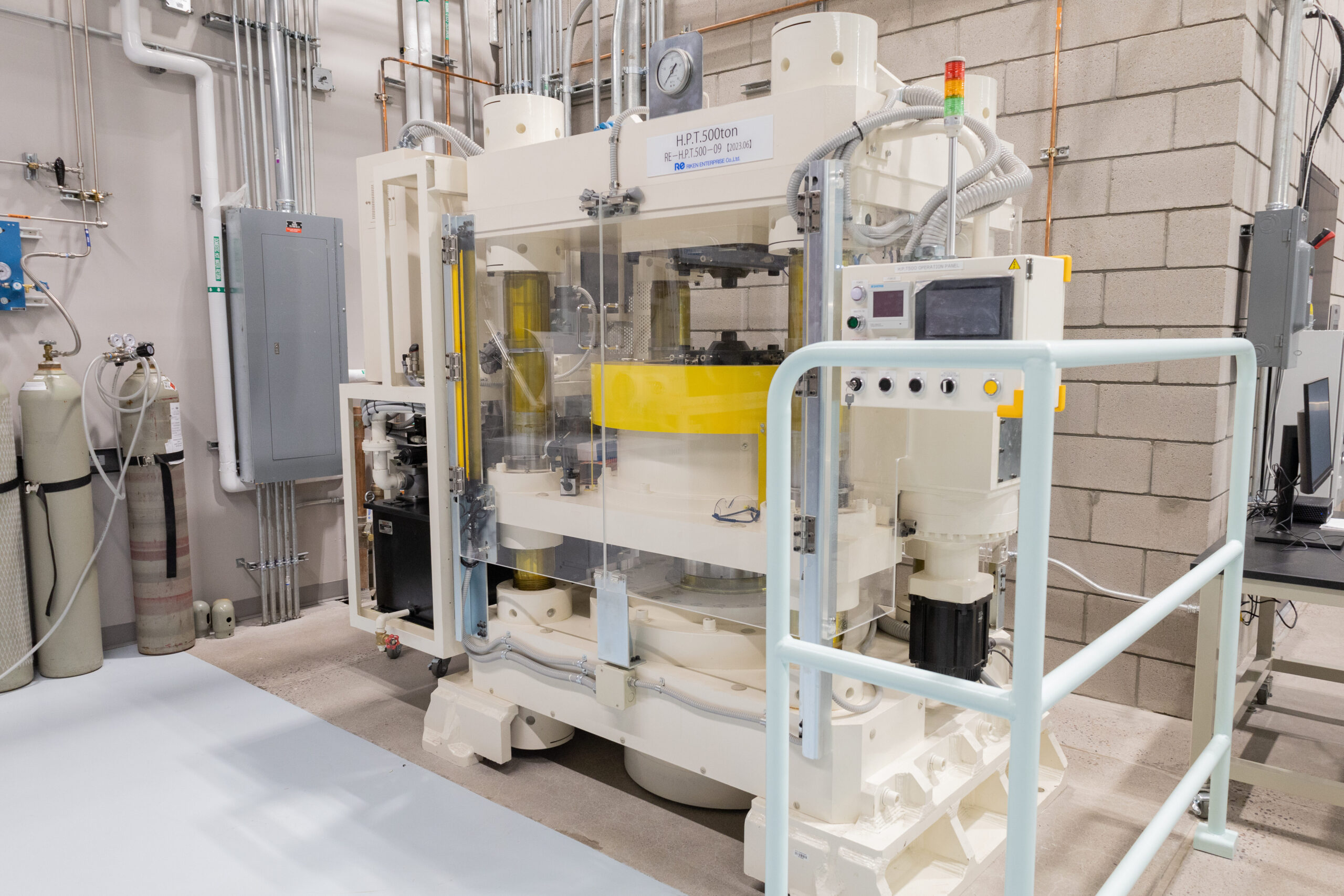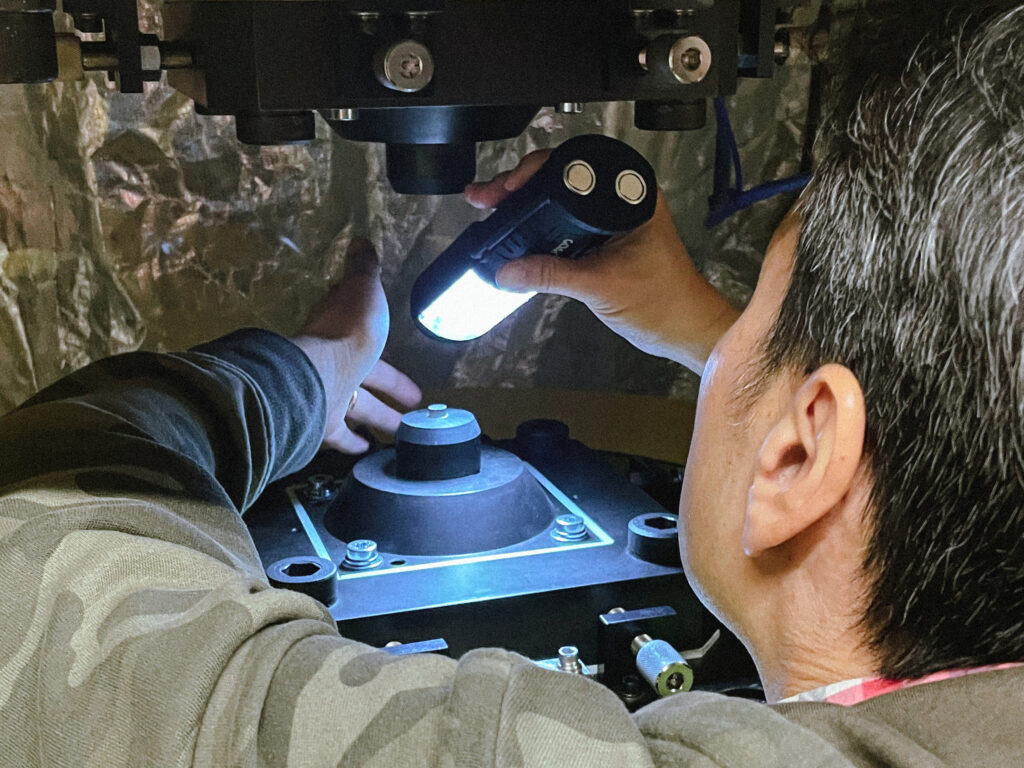Twister

Twister is FORCE’s high pressure torsion device (HPT). With Twister, it is possible to take a sample up to pressures up to 6 GPa and temperatures up to 200°C and apply torsional stresses to the sample, causing deformation and changes in the sample’s micro- and nanostructure. This allows materials scientists and Earth scientists to explore mechanical properties that are otherwise unobtainable. This is different from many of FORCE’s other apparatuses; Ichiban and Jasmine both primarily function as a crystal synthesis tool that can induce phase changes in materials. Twister specializes in something entirely different, showcasing FORCE’s wide range of capabilities.
The sample is first pressurized to the target pressure, and is then twisted a given number of rotations depending on the experiment. The continual twisting is what causes the torsional stresses to build within the sample, and eventually causes deformation that has an observable impact on the sample.

Twitter can be used to simulate geological activity, such as shear zone mylonite formation, but it truly shines in the realm of materials science. With the ability to create novel materials, including but not limited to metal composites that cannot be alloyed through conventional means, ultrafine materials with new structures, and composites that cannot be joined in any other way. One of these composites made through an HPT system was an Al-Mg alloy system that could potentially open up new avenues of discovery for that entire system (Kawasaki et al., 2016).
Currently, there are very few HPT devices available for use around the world. Despite the HPT’s relative scarcity, there is a lot of exciting research that takes of advantage of how an HPT can impact microstructures. For example, a recent study looked at HPT-treated materials as a new avenue for hydrogen storage, given the way defects and grain boundaries propagate under torsional stresses at high pressure (Edalati et al., 2018).
References:
Edalati K, Akiba E, Horita Z (2018) High-pressure torsion for new hydrogen storage materials. Sci Technol Adv Mater., 19(1):185-193, 10.1080/14686996.2018.1435131
Kawasaki M, Ahn B, Lee H, Zhilyaev AP, Langdon TG (2016) Using high-pressure torsion to process an aluminum–magnesium nanocomposite through diffusion bonding. Journal of Materials Research, 31(1):88-99, 10.1557/jmr.2015.257